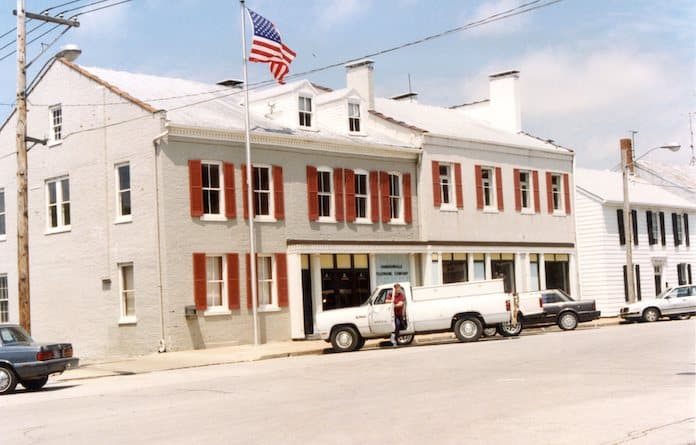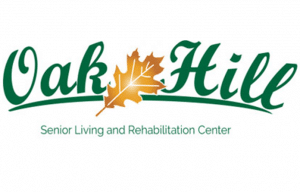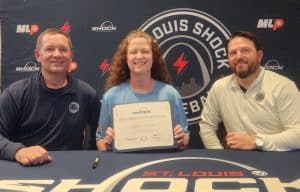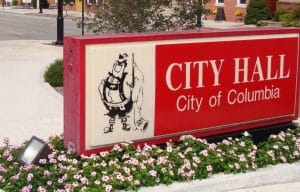HTC celebrates 125 years
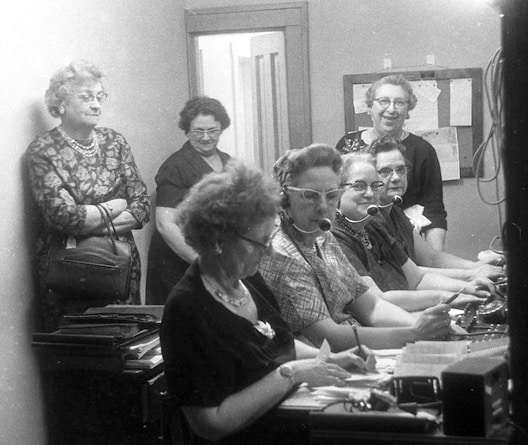
Harrisonville Telephone Company is celebrating its 125th anniversary in 2021.
While its history has an air of mystery surrounding it, the company confidently states one thing has remained the same since its origin: a commitment to customers and their communities.
This year’s anniversary celebrates the company’s incorporation on Jan. 17, 1896, with the merging of Home Telephone Company in Harrisonville with a similar company in Waterloo to form Harrisonville Telephone Company.
HTC’s President and CEO H.R. Gentsch said the Waterloo company was formed to connect with the Bell system in St. Louis.
Because records from that time period are “non-existent,” Gentsch said the exact motives behind the merger are somewhat of a mystery.
“Harrisonville was a river loading dock. Barges stopped at the river to load grain and whatever,” Gentsch said. “There was a brewery operating in Waterloo and (rumor has it) … they needed a way to get beer down to that river loading dock faster and they wanted to create some way of communicating from Harrisonville to Waterloo.”
This brewery was the Michael Schorr Brewery, which sat where JV’s Bar & Grill now operates, Gentsch shared. According to oldbreweries.com, the brewery was established in 1884 and closed in 1902.
Harrisonville Telephone Company continued to grow from its initial incorporation. By 1923, the company was in negotiation with Farmers Fountain Telephone Company in Columbia, but HTC did not acquire Farmers Fountain until after 29 years of negotiations.
As to why negotiations took so long, Gentsch said “I have no idea.”
“The individual at Farmers Fountain was quite colorful, and why it took so long, I don’t know. I found nothing in our records that would really indicate why the process was as long as it was, but it finally took place and went forward from there.”
Later in the 1950s, the company continued to expand as it acquired small companies in Renault, Maeystown and Prairie.
In the late 1980s, HTC got into the cellular game when it, along with six other companies in Southern Illinois, formed the Southern Illinois Cellular Corporation. The new company provided cell service to “all of Southern Illinois south of Interstate 64, river-to-river all the way down to Carroll, with the exception of St. Clair and Monroe County,” Gentsch said.
That business was later sold, and HTC no longer provides cell service.
In 1995, Harrisonville Telephone Company moved into its current headquarters at 213 S. Main Street in Waterloo, and one year later it formed HTC Holding Company, which Gentsch said operates with three subsidiaries: Harrisonville Telephone Company, HTC Communications and HTC Technology.
As one can expect, technological advances charted much of Harrisonville Telephone Company’s 125-year history.
The first major technology change it underwent came in the 1940s, when its exchanges converted from magneto to common battery telephone service.
“Magneto telephone service was the type of service that if you wanted to make a phone call, you had a phone in your home with a crank on it and you had to crank that to ring the telephone operator,” Gentsch explained. “The telephone operator would then connect your line with the line you were trying to reach.”
With common battery, customers no longer had to crank to reach the telephone operator. Instead, a user was automatically connected to the operator when they picked up the receiver. There were as many as 23 customers on one party line – meaning if one’s neighbor was on the phone, they could not complete a call.
Eventually, the company began the process of converting to rotary dial service. This transition started with the Columbia exchange, as it was the first one to obtain the new service in 1954. In the 1960s, all of their existing exchanges converted to rotary dial service, reducing the number of customers on a party line to no more than eight.
When customers picked up the phone, they heard a dial tone. Later in the 1960s, touch tone service was introduced, which is the equivalent of push button service.
“It’s hard to believe, isn’t it?” Gentsch said with a chuckle when explaining the party line system.
The wireless equivalent of the party line landline system was introduced to Harrisonville Telephone Company customers in the late 1960s when it began offering IMTS mobile service.
“That was the forerunner to today’s cell phone service,” Gentsch said of IMTS. “This was a nationwide service offered primarily by the Bell system. It was a wireless mobile party line. We could have up to 23 mobile customers on the same frequency, so it was very similar (to the party line). If you were in your car driving somewhere – and back then, there were no pocket phones, no carry phones, these were hardwired in your vehicle – if you picked up to make a call there could be someone else on there and you (would be) unable to place a call.”
The 1980s proved to be a pivotal decade in company history. It abolished landline party line service, at first going from eight customers on a line to four to each customer having their own line.
The company began providing broadband internet service, and as mentioned previously, it also began offering cell service.
This wasn’t all the 1980s had in store, however.
“In the mid-80s, we also began to convert our switching operation from the technology of step-by-step to what was called digital switching, which was at that time a newer improved form of technology that was available. This was completed in the 90s,” Gentsch said.
Until 2004, Harrisonville Telephone Company was the exclusive provider of Direct TV service in the area. It began being the exclusive provider in 1992.
In the 1990s, it was also finishing up its conversion to digital switching. It also started the process of using fiber optic cables.
At the turn of the century, the company began offering wireless internet outside of its traditional service area, extending this feature to Millstadt, New Athens, Fayetteville, Hecker, Evansville and more.
In 2009, Harrisonville Telephone Company introduced Internet Protocol Television Service, which is today’s standard. A decade later, it upgraded its switching architecture to internet protocol-based.
“It’s the latest technology that’s available today,” Gentsch said.
In the last two years, the company has continued to hone in on what its customers need. Seeing a lack of local content in popular streaming services, Harrisonville Telephone Company began offering HTC TV Now.
“We are the only over-the-top streaming solution that provides access to the local St. Louis channels,” Gentsch said with pride. “That is (important) for many people because based on all of the statistics we have, people still like to watch local things.”
In 2020, they continued providing to extend their wireless internet service to more remote parts of their traditional service area.
When the pandemic hit, the company also listened to the rural community’s need for faster broadband internet services.
“The pandemic really drove the value of broadband services and the requirement of broadband services (up) due to students attending school from home as well as … adults working from home in an internet environment,” Gentsch said, further explaining, “We’ve had broadband for quite some time, it’s just that we’re accelerating and doing everything we can do to continue (providing faster) speeds to more areas.”
In order to obtain higher speeds throughout its entire serving area, the company uses fiber-plus technology that allows for the expansion of speed on copper facilities.
It’s not just its immediate customers the company hopes to serve, though, as it is known for giving back to the community at large.
Such initiatives have included sponsoring Monroe County Fair fireworks, donating to the county’s YMCA and offering scholarships to high school seniors.
“We pride ourselves on being very, very supportive of everything going on in the communities,” Gentsch said.
Gentsch said being able to serve the company’s customers and communities at large would not be possible without its nearly 100 dedicated employees.
For more information on Harrisonville Telephone Company’s current services, visit htc.net or call 618-939-6112.
